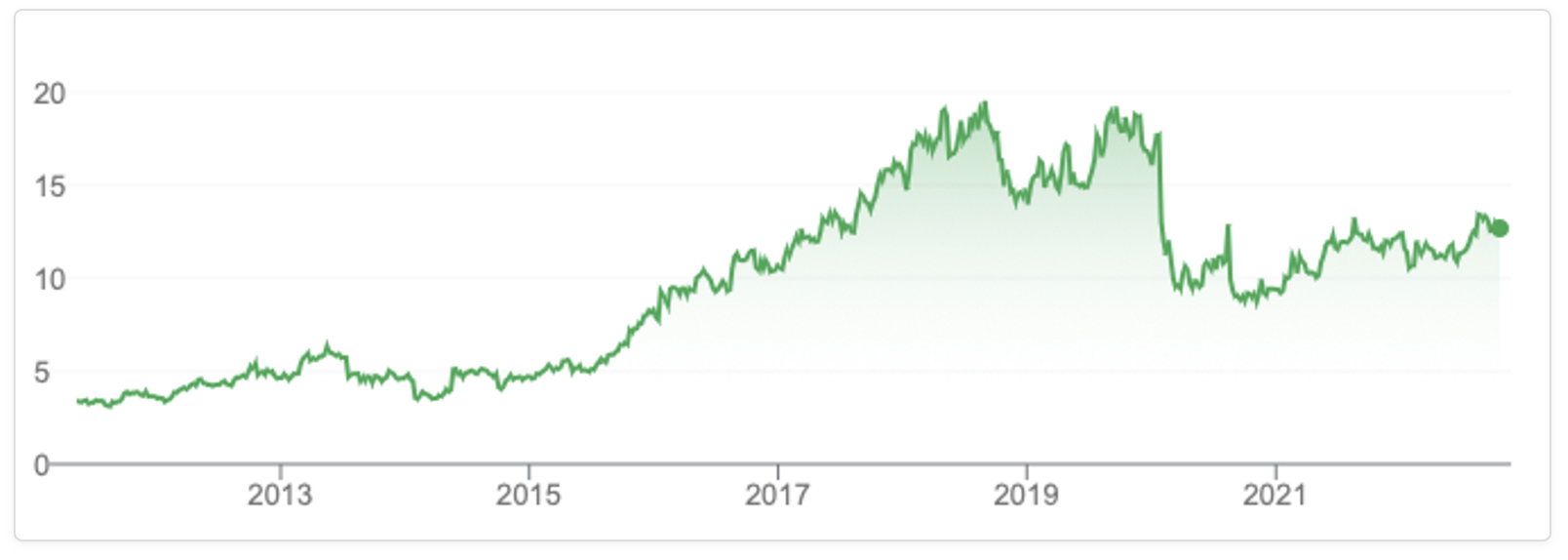The Montgomery Fund’s investment thesis in Treasury Wine Estates
As part of Montgomery’s transition with Australian Eagle Asset Management, one of the new companies in The Montgomery Fund and The Montgomery [Private] Fund is Treasury Wine Estates (ASX: TWE). Here I’d share a high-level overview of the thesis for the inclusion of Treasury Wine Estates in the portfolios.
The rise and fall of Treasury Wine has been well-publicised and many investors regard it as a barometer for Australian-Sino relations. Australian Eagle Asset Management was a Treasury Wines shareholder from 2013 to 2020, believing the drive to grow Chinese distribution would lift group earnings before interest and taxes (EBIT) margins from a low of 10 percent to over 20 percent. Australian Eagle’s subsequent disposal of the shares was prompted by the meeting of those expectations and an increase in risk associated with U.S. inventory.
Shortly after selling the shares, in August 2020 sales of wine to China evaporated amid that country’s imposition of a greater-than 200 percent tariff on Australian wine imports. The share price fell 30 percent from $13 to below nine dollars within a month.
Figure 1. Treasury Wine Estate share price 2011-2022

Today’s investment thesis differs from the previous foray
The establishment of the company as a well-run wine producer, marketer, and distributor was completed by previous management. This year they have embarked on an expansion into the premium luxury sector with acquisitions of other premium wine labels. The quality of the American division’s earnings has also improved with the divestment of commoditised commercial wines, resulting in lower volume but much higher operating margins operations.
The trigger for investment came from the strong growth in the Asian division. This occurred despite a virtual ban on the export of the company’s prized Penfolds brand wines, reflecting management’s distribution expertise and providing confidence in their multi-country expansion of the Penfolds brand. The strategy simultaneously expands the company’s Total Addressable Market and reduces geopolitical risk.
The improvement in the quality of the overall business, by de-risking via reduced exposure to Chinese Communist Party (CCP)-ruled China, provides strong downside protection to shareholder capital. Growth options concurrent with margin expansion have the potential to grow earnings for many years above current analyst projections.
2 topics
1 stock mentioned

